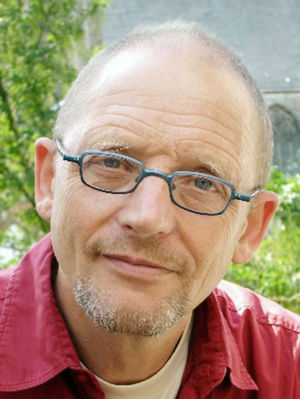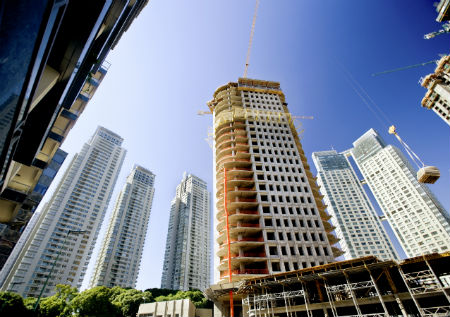Helping to decarbonize the building sector is the goal of the new holistic approach being developed by the ISO joint working group for the energy performance of buildings (EPB) – an approach which reconciles climate and energy needs. And with the future ISO 52000 series of standards under development, the building industry is expected to be much better positioned to attain energy efficiency improvements with the best available technology and practice. That's because solutions that improve energy efficiency often usher in new ways to enhance operational efficacy and drive innovation.
So, what does this mean in practical, concrete terms? We decided to ask Dick van Dijk and Prof. Essam E. Khalil, Co-Convenors of the ISO joint working group Energy performance using holistic approach for their vision of the building industry’s role in helping to build a low-carbon future.*

Buildings literally gobble up energy. In fact, energy expenditures account for around 40 % of a building’s total operating costs. What kind of challenges and opportunities does this represent?
The building industry is confronted with a range of challenges and opportunities when it comes to reducing energy consumption and increasing the use of renewables. This includes the need to address the increasing energy demands of growing economies, as well as the energy poverty issues in developing countries. Within this context, developing countries need to follow a low-energy, low-carbon and resource-efficient path.
Several developed countries have set ambitious goals to reduce to (nearly) zero the energy in new buildings over the next few years. These countries will eventually focus on net zero energy districts, with an emphasis on refurbishing existing buildings and increasing the share of renewable energy.
Clear and consistent policy targets play an important role in driving innovation in the building sector. International Standards will be needed to harmonize the terms, definitions, assessment procedures and indicators in order to develop new concepts and technologies as well as monitor and evaluate progress.

How is maximum efficiency addressed by the holistic approach for the energy performance of buildings (EPB)?
In the past, energy performance requirements were set at component level – minimum thermal insulation levels and minimum efficiencies of products. This, however, leads to sub-optimal solutions and creates a barrier to the necessary technology transitions.
The holistic approach to assessing the overall energy performance of buildings and the built environment, provided by the set of EPB standards (the ISO 52000 series of standards), is a key tool to overcome these barriers.
I want to use effective and inexpensive energy efficiency solutions. What will the future ISO 52000 series of standards mean for me?
The ISO 52000 series of standards will enable to assess the overall energy performance of a building. This means that any combination of technologies can be used to reach the intended energy performance level, at the lowest cost.
Due to this 'competition' between different technologies, the holistic approach is a key driver for technological innovation and change. Countries using the approach for several years – take, for instance, the Netherlands – have experienced large scale implementation and cost savings on a variety of new technologies. This includes thermal insulation concepts, windows, heating, cooling, lighting, ventilation or domestic hot-water systems, building automation and control, and renewable energy sources.

Who are the potential users of the ISO 52000 set of standards, and what should they be aware of?
The energy assessment of buildings is carried out for various purposes, such as:
- Judging compliance with building regulations expressed in terms of limited energy use or a related quantity
- Increasing transparency in real-estate transactions through an energy performance certification and/or display of the level of energy
- Monitoring the energy efficiency of the building and its technical building systems
- Helping to plan retrofit measures through predicting energy savings that would result from various actions
In general, the holistic approach means that the energy performance is assessed as the total energy used for heating, cooling, lighting, ventilation, domestic hot water, and, in some cases, appliances.
How will the ISO 52000 series benefit regulators/public authorities in particular?
One of the main purposes of the EPB standards is to enable their use in laws and regulations and, in some cases, make them compulsory. This has led to the development of a systematic, clear, comprehensive and unambiguous set of energy performance procedures.
What’s more, differences in national and regional climate, culture and building tradition, as well as policy and legal frameworks are taken into account. Different options are given for procedures, input data and boundary conditions. For each option, a clear template is provided that can be used to tailor the energy performance assessment to a specific situation. An informative ("default") set of choices is also suggested.
Finally, the modular structure set out by the EPB standards maximizes the possibilities for a step-by-step implementation at the national or regional levels. Different policy priorities and practical constraints may need to be balanced out on a case-by-case basis. This includes taking into account well-established existing practices and procedures, at least during a transition period.
The ISO 52000 series is being developed in close collaboration with the European Committee for Standardization (CEN) and other standards organizations (e.g. ASHRAE). In Europe, the EPB standards are being developed to support national implementation of the Energy Performance of Buildings Directive (EPBD).

What is the next step for the joint working group that you co-convene? What other standards need to be developed to help further reduce energy use and consumption?
The backbone of the ISO 52000 series is the overarching standard, currently under development. One of the next steps is to prepare standards that bridge the gap between the "stand alone" product information and the real energy performance of systems as an integral part of the building. This is the element currently missing in our holistic or systemic approach. Fortunately, it is expected that the new European EPB standards, currently in preparation, will provide valuable input, also in this field.
* Dick van Dijk and Prof. Essam E. Khalil are Co-Convenors of the joint working group of ISO technical committees ISO/TC 205, Building environment design (whose secretariat is held by ANSI, ISO member for the USA), and ISO/TC 163, Thermal performance and energy use in the built environment (whose secretariat is held by SIS, ISO member for Sweden).

